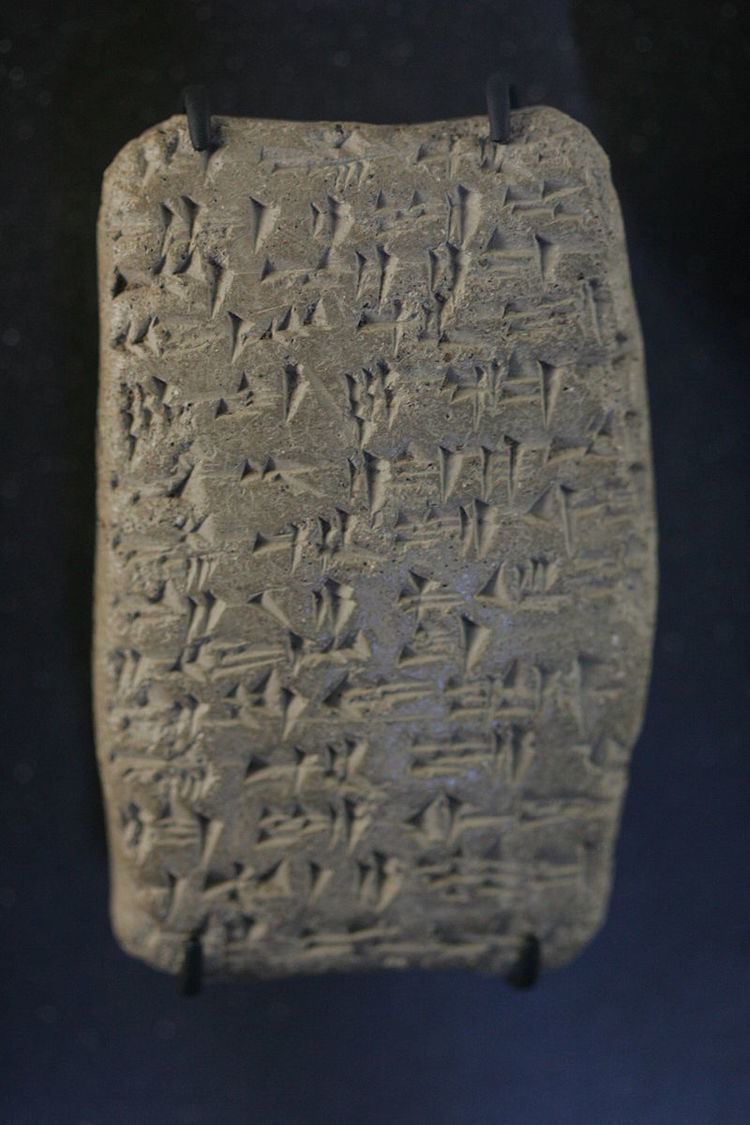 | ||
The cuneiform mi, (also mé) sign is a distinctive sign in the wedge-stroke group, and is used as a syllabic for mi, me, and an alphabetic for m, i, or e; it is also a sumerogram (capital letter (majuscule)) for MI, used for Akkadian language, "mūšu", night. MI, in the Epic of Gilgamesh, is used in (Chapters) Tablets I, II, III, and XII as either MI, or MI.MEŠ, a total of six times; other spellings of mūšu in other sections are alphabetic/syllabic, four times.
The sign can be found in the Epic of Gilgamesh and the mid-14th century BC Amarna letters. The signs usage in the Epic is as follows: mé-(1 time), mi-(126), MI-(9).
Partial list of signs beginning with wedge (u)
Partial list of signs beginning with (wedge)-u, from the Epic of Gilgamesh (Parpola, 1971), and the Amarna letters:
Also:
References
Mi (cuneiform) Wikipedia(Text) CC BY-SA
